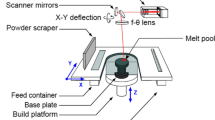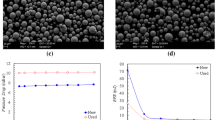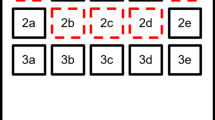Abstract
Laser powder bed fusion (L-PBF) is an additive manufacturing process in which a 3D part is fabricated by fusing metal powder together layer by layer. L-PBF has many variables which contribute to part performance, which include powder properties, process parameters, and machine condition. L-PBF is a relatively expensive process compared to traditional manufacturing. Feedstock material and build time are two major factors which contribute to the cost of the L-PBF process. Various methods were explored as ways to reduce the cost of 4340 steel parts manufactured by L-PBF, including fabricating the parts with thicker powder layers and expanding the allowable powder particle size range. In addition, the effects of powder porosity and recoater condition on producing consistent material properties in the manufactured part were also explored. The experimental results showed that allowing a larger powder particle size range and thicker powder layers was a possible method for reducing the cost of L-PBF-fabricated 4340 steel parts without significantly degrading the mechanical properties. Methods for measuring the allowable loose particle porosity will be emphasized in this report. Furthermore, the study also revealed the importance of the recoater condition because variation in the machine condition can negatively influence the part quality.






Similar content being viewed by others
References
H. Gu, H. Gong, J.J.S. Dilip, D. Pal, H. Doak, and B.Stucker, Effects of Powder Variation on the Microstructure and Tensile Strength of Ti6Al4v Parts Fabricated by Selective Laser Melting, in Solid Freeform Fabrication Symposium Proceedings (2016), pp. 470–483
A. Spierings, N. Herres, and G. Levy, Influence of the Particle Size Distribution on Surface Quality and Mechanical Properties in Additive Manufactured Stainless Steel Parts, Rapid Prototyp. J., 2011, 17(3), p 195–202
A.T. Sutton, C.S. Kriewall, M.C. Leu, and J.W. Newkirk, Powders for Additive Manufacturing Processes: Characterization Techniques and Effects on Part Properties, in Solid Freeform Fabrication Symposium Proceedings (2016). pp. 1004–1030
S. Wang, Y. Liu, W. Shi, B. Qi, J. Yang, F. Zhang, D. Han, and Y. Ma, Research on High Layer Thickness Fabricated of 316L by Selective Laser Melting, Materials, 2017, 10(1055), p 1–15
E. Jelis, M. Hespos, and N. Ravindra, Process Evaluation of AISI, 4340 Steel Manufactured by Laser Powder Bed Fusion, J. Mater. Eng. Perform., 2017, 27(1), p 63–71
X. Shi, S. Ma, C. Liu, C. Chen, Q. Wu, X. Chen, and J. Lu, Performance of High Layer Thickness in Selective Laser Melting of Ti6Al4V, Materials, 2016, 9(975), p 1–15
P. Ponnusamy, S. Masood, D. Ruan, S. Palanisamy, R. Rahman Rashid, and O.A. Mohamed, Mechanical Performance of Selective Laser Melted 17-4 PH Stainless Steel Under Compressive Loading, in Solid Freeform Fabrication Symosium Proceedings (2017), pp. 321–331
V. Sufiiarov, A. Popovich, E. Borisov, I. Polozov, D. Masaylo, and A. Orlov, The Effect of Layer Thickness at Selective Laser Melting, Procedia Eng., 2017, 174, p 126–134
America Makes and ANSI Additive Manufacturing Collaborative (AMSC), “Standardization Roadmap for Additive Manufacturing”, 2.0, 2018, p 1–268
J.A. Slotwinski, E.J. Garboczi, and K.M. Hebenstreit, Porosity Measurements and Analysis for Metal Additive Manufacturing Process Control, J. Res. Natl. Inst. Stand. Technol., 2014, 119, p 494–528
Acknowledgments
We would like to thank RDECOM ManTech office for supporting this effort. We would also like to recognize US Army ARDEC Statistical Methods and Analysis Group, RDAR-EIQ-SB for the development of a method to calculate particle porosity with image analysis.
Author information
Authors and Affiliations
Corresponding author
Rights and permissions
About this article
Cite this article
Jelis, E., Hespos, M., Groeschler, S.L. et al. L-PBF of 4340 Low Alloy Steel: Influence of Feedstock Powder, Layer Thickness, and Machine Maintenance. J. of Materi Eng and Perform 28, 693–700 (2019). https://doi.org/10.1007/s11665-018-3739-2
Received:
Revised:
Published:
Issue Date:
DOI: https://doi.org/10.1007/s11665-018-3739-2




